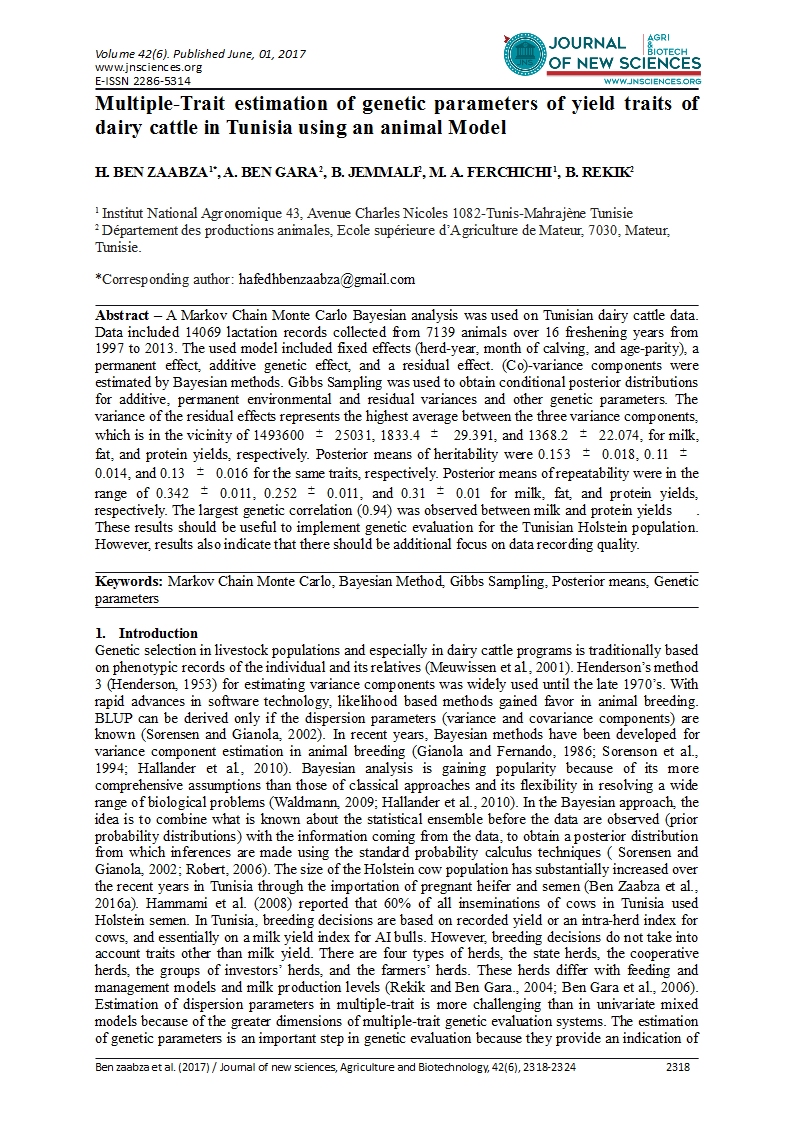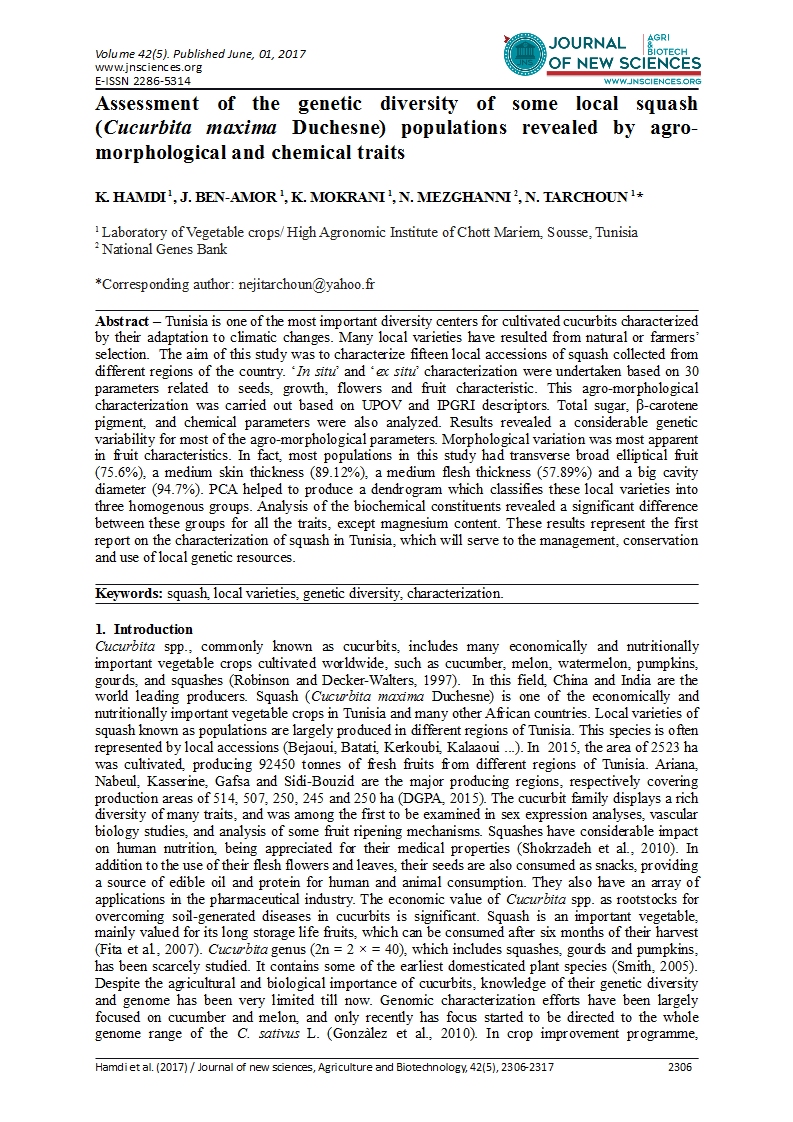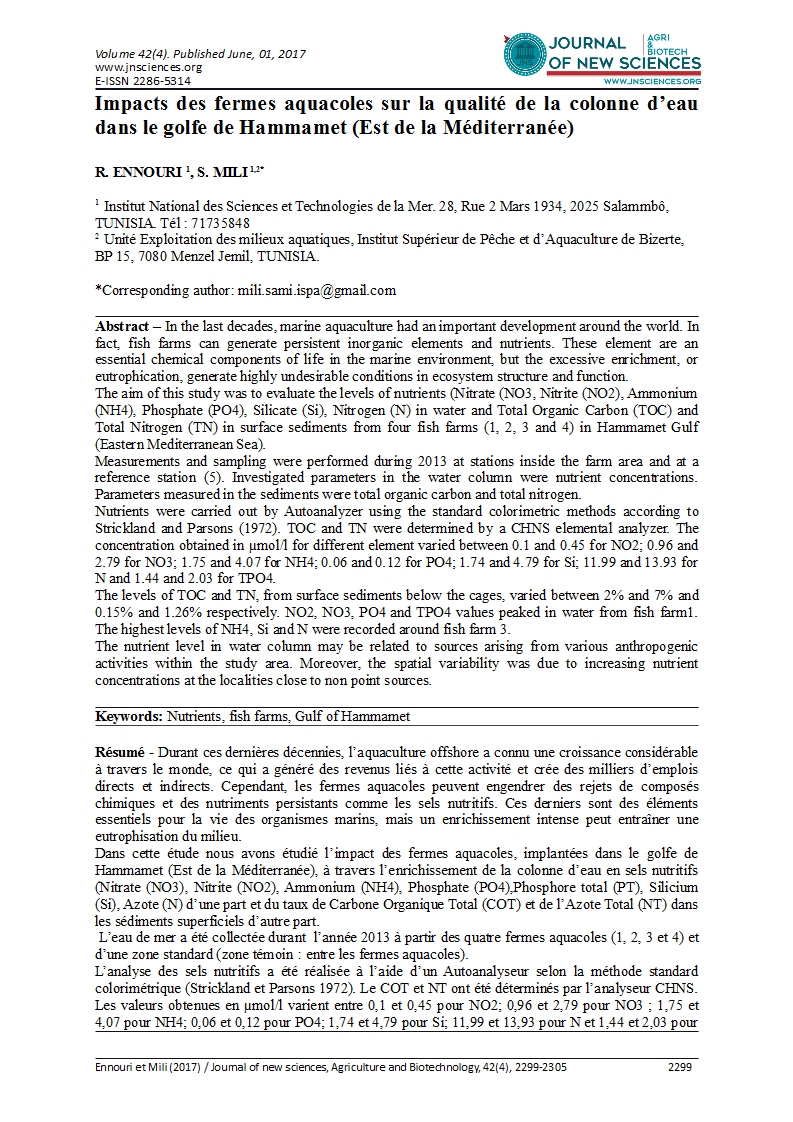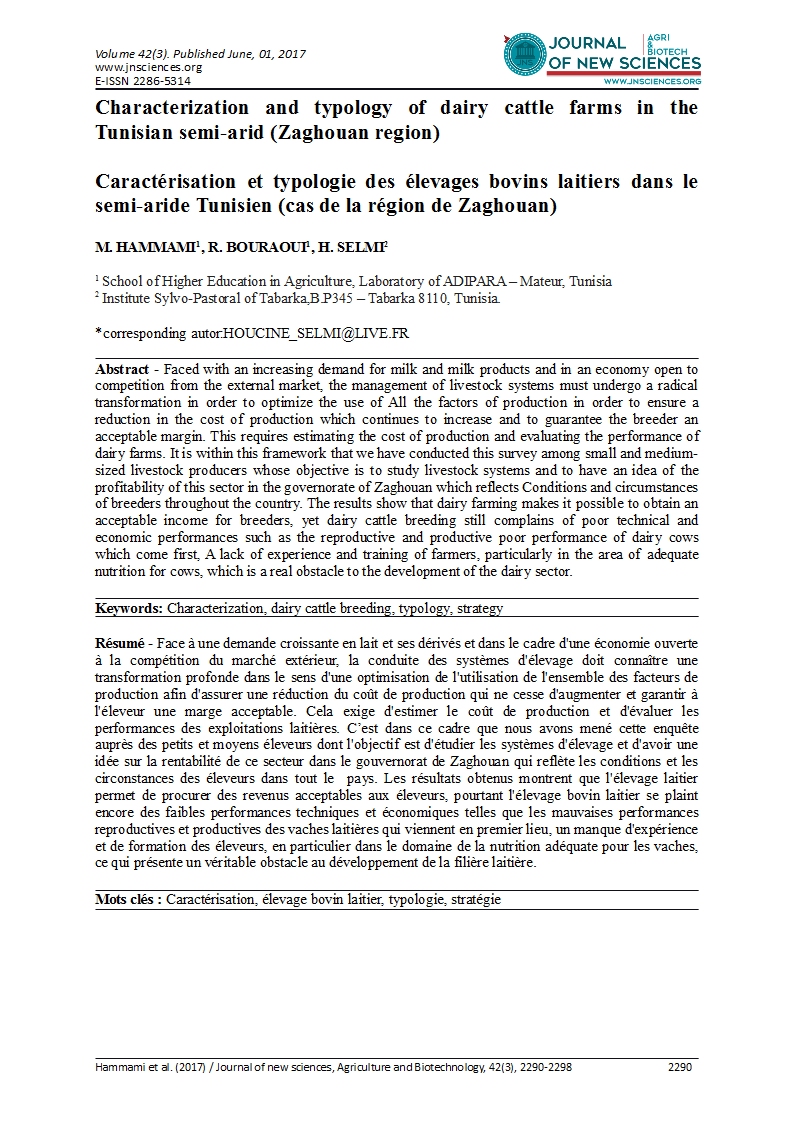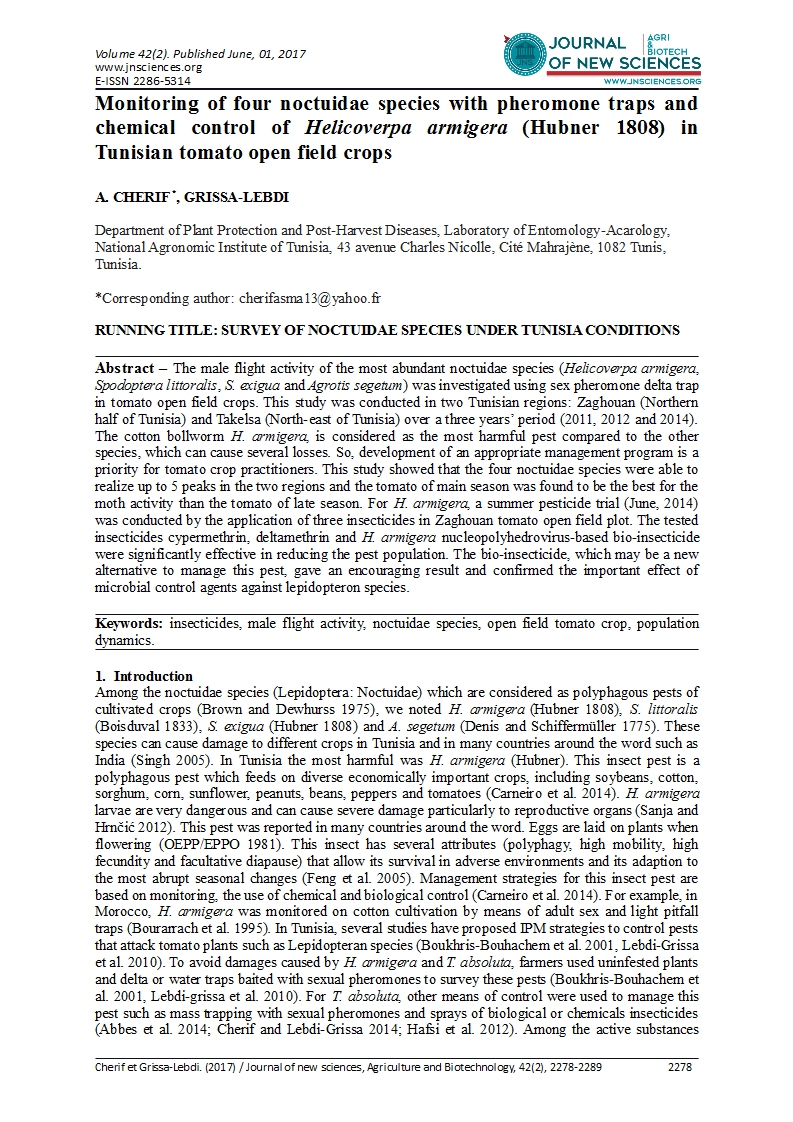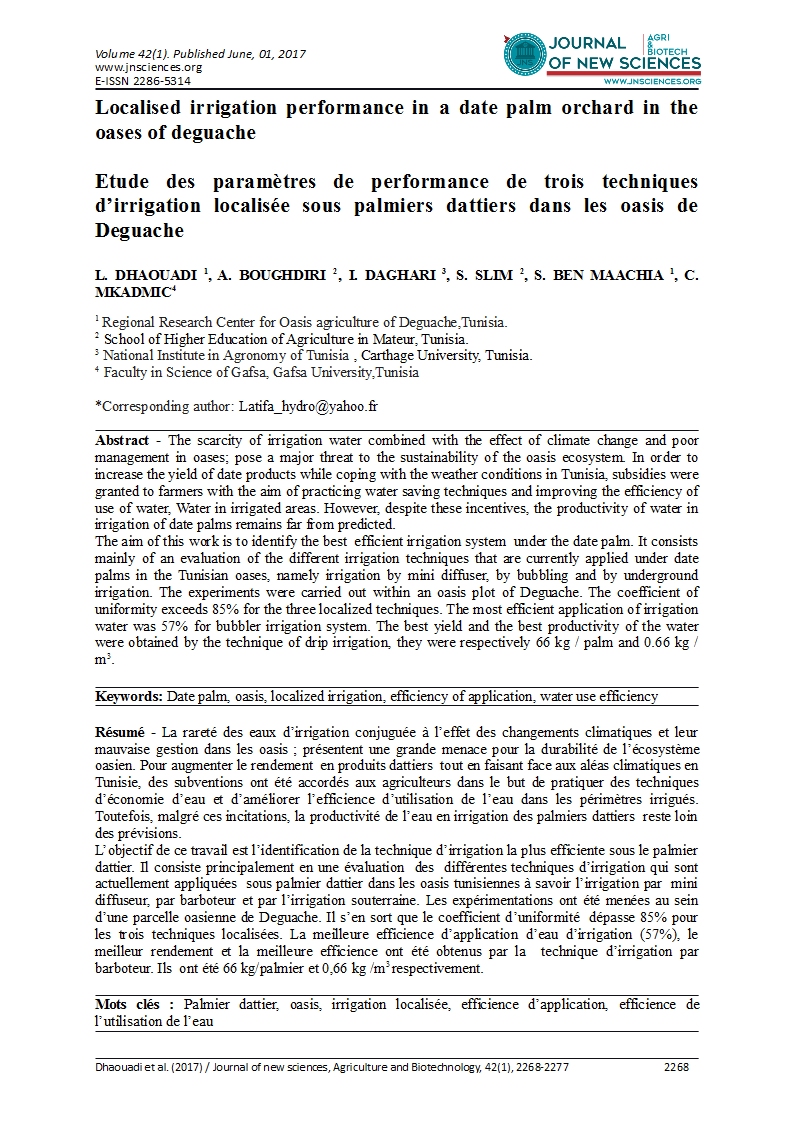- Category: Volume 42
- Hits: 4854
Effect of the pre-crop and the mineral fertilization on the agronomic parameters and the nodulation of pea
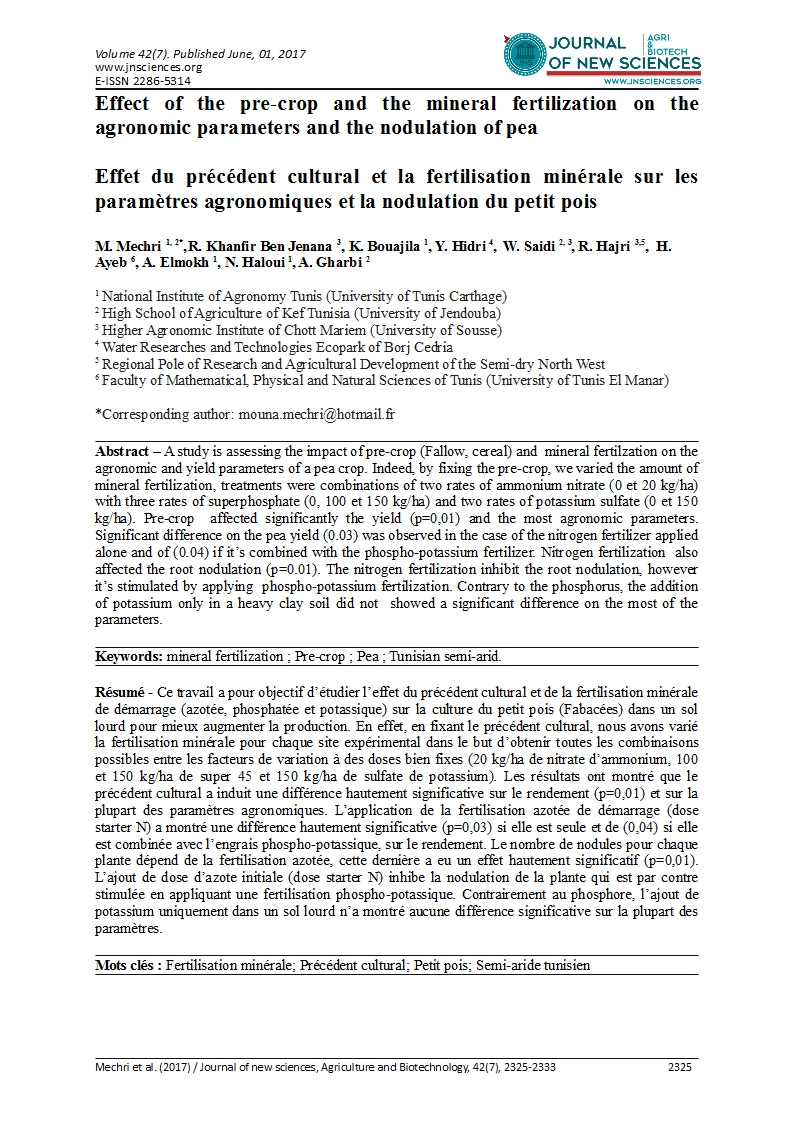
Effet du précédent cultural et la fertilisation minérale sur les paramètres agronomiques et la nodulation du petit pois
M. Mechri 1, 2*
R. Khanfir Ben Jenana 3
K. Bouajila 1
Y. Hidri 4
W. Saidi 2, 3
R. Hajri 3,5
H. Ayeb 6
A. Elmokh 1
N. Haloui 1
A. Gharbi 2
1 National Institute of Agronomy Tunis (University of Tunis Carthage)
2 High School of Agriculture of Kef Tunisia (University of Jendouba)
3 Higher Agronomic Institute of Chott Mariem (University of Sousse)
4 Water Researches and Technologies Ecopark of Borj Cedria
5 Regional Pole of Research and Agricultural Development of the Semi-dry North West
6 Faculty of Mathematical, Physical and Natural Sciences of Tunis (University of Tunis El Manar)
Abstract – A study is assessing the impact of pre-crop (Fallow, cereal) and mineral fertilzation on the agronomic and yield parameters of a pea crop. Indeed, by fixing the pre-crop, we varied the amount of mineral fertilization, treatments were combinations of two rates of ammonium nitrate (0 et 20 kg/ha) with three rates of superphosphate (0, 100 et 150 kg/ha) and two rates of potassium sulfate (0 et 150 kg/ha). Pre-crop affected significantly the yield (p=0,01) and the most agronomic parameters. Significant difference on the pea yield (0.03) was observed in the case of the nitrogen fertilizer applied alone and of (0.04) if it’s combined with the phospho-potassium fertilizer. Nitrogen fertilization also affected the root nodulation (p=0.01). The nitrogen fertilization inhibit the root nodulation, however it’s stimulated by applying phospho-potassium fertilization. Contrary to the phosphorus, the addition of potassium only in a heavy clay soil did not showed a significant difference on the most of the parameters.
Keywords: mineral fertilization ; Pre-crop ; Pea ; Tunisian semi-arid.
Résumé - Ce travail a pour objectif d’étudier l’effet du précédent cultural et de la fertilisation minérale de démarrage (azotée, phosphatée et potassique) sur la culture du petit pois (Fabacées) dans un sol lourd pour mieux augmenter la production. En effet, en fixant le précédent cultural, nous avons varié la fertilisation minérale pour chaque site expérimental dans le but d’obtenir toutes les combinaisons possibles entre les facteurs de variation à des doses bien fixes (20 kg/ha de nitrate d’ammonium, 100 et 150 kg/ha de super 45 et 150 kg/ha de sulfate de potassium). Les résultats ont montré que le précédent cultural a induit une différence hautement significative sur le rendement (p=0,01) et sur la plupart des paramètres agronomiques. L’application de la fertilisation azotée de démarrage (dose starter N) a montré une différence hautement significative (p=0,03) si elle est seule et de (0,04) si elle est combinée avec l’engrais phospho-potassique, sur le rendement. Le nombre de nodules pour chaque plante dépend de la fertilisation azotée, cette dernière a eu un effet hautement significatif (p=0,01). L’ajout de dose d’azote initiale (dose starter N) inhibe la nodulation de la plante qui est par contre stimulée en appliquant une fertilisation phospho-potassique. Contrairement au phosphore, l’ajout de potassium uniquement dans un sol lourd n’a montré aucune différence significative sur la plupart des paramètres.
Mots clés : Fertilisation minérale; Précédent cultural; Petit pois; Semi-aride tunisien

